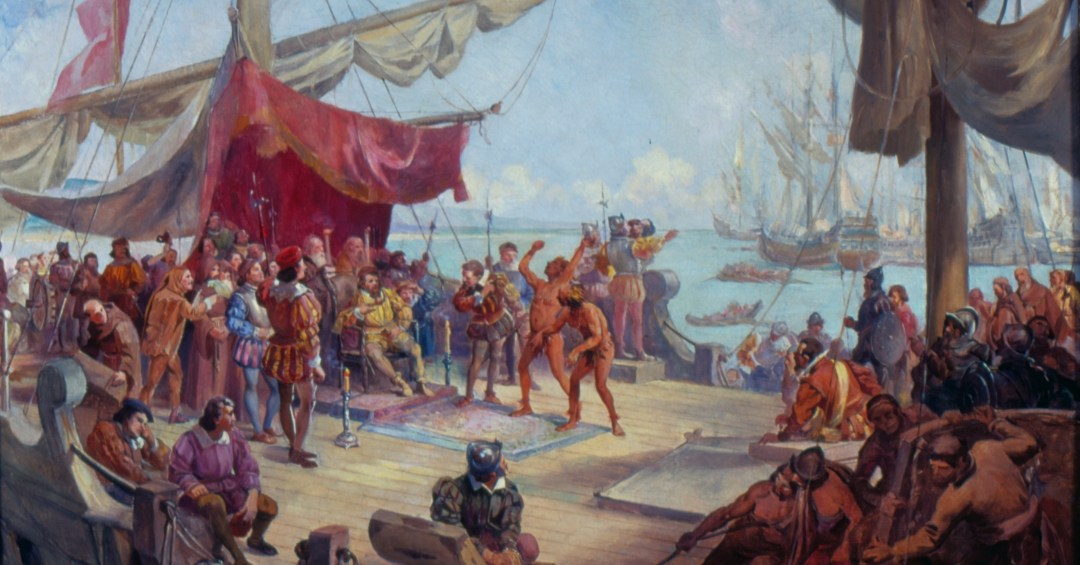“The person who discovered Brazil was Pedro Álvares Cabral”: this statement, consecrated by official documents over the centuries, and taught for a long time in school benches, is nowadays widely questioned. And, let’s say right away, for great reasons, which we will explain here.
But let’s start with the fact itself: on April 22, 1500, a Portuguese squadron made up of 12 vessels, under the command of navigator Pedro Álvares Cabral, bound for India, arrived on the coast of Bahia. He remained there for ten days, before continuing his journey. Cabral sent one of the vessels back to Portugal with news about the territory, the well-known letter from Pero Vaz de Caminha describing the new land, as well as samples of vegetation and collected objects. He left two degraded people on the ground.
Without a doubt, this is the official moment of the “taking over” by the Portuguese Crown of what would become Brazil. But there is a lot of evidence that there was not exactly a “discovery”, and that the Portuguese already knew that they would find land in these parts.
Treaty of Tordesillas
The greatest evidence that Cabral’s arrival was not accidental is that, in 1494, Portugal and Spain had signed the Treaty of Tordesillas. The two countries were the great maritime powers of the time. Since the first half of the 15th century, Portugal expanded its territories in Africa and on islands and archipelagos in the Atlantic Ocean. In 1492, in turn, Christopher Columbus, in the service of Spain, arrived in American lands, in the Caribbean.
The Treaty of Tordesillas divided the lands discovered west of the European continent between the two countries, using as a reference a meridian (a line drawn from north to south on the globe) located 370 leagues west of the Cape Verde archipelago. This determined a line that, in current Brazil, would pass close to the cities of Belém (PA), to the north, and Laguna (SC) to the south. The part of Portugal is the land east of that line.
It is very unlikely that Portugal would have signed a treaty if it had ignored the real existence of lands east of the Tordesillas meridian. At that time, starting with Columbus’s voyage, there were probably several secretive exploratory sea voyages whose results were a state secret.
Continues after advertising
Even though it officially took possession, Portugal only effectively began colonizing the territory in 1530, with the first colonization expedition led by Martim Afonso de Souza. In 1534, with the creation of the Hereditary Captaincies, the Portuguese Crown defined a policy to begin occupying its new territory.
Brazil before Cabral
The concept of “discovery” of Brazil, however, is consistently criticized based on an unquestionable reality: the national territory had already been populated for millennia before the arrival of the Portuguese. The concept of “discovery” comes from the exclusive perspective of the Portuguese – that is, in academic terms, it is a “Eurocentric” vision of history.
+ Repertoire: understand concepts of decoloniality
It is estimated that, in 1500, around 3 million indigenous people lived in Brazilian territory, divided into around 1,400 peoples, who spoke 1,300 languages. They had a rich culture, developed over millennia.
The conditions of human presence in the Americas are still the subject of considerable debate and scientific research, but it is already clear that the arrival of human beings to the continent occurred in more than one moment, and that it dates back more than 12 thousand years (sustained hypothesis for a long time by the theory known as Clovis).
Continues after advertising
Human beings have been present in Brazilian territory for more than 10 thousand years, as shown by studies carried out in recent decades. In Lagoa Santa (MG), in the 1970s, excavations found a human skeleton – called Luzia – who lived between 11 thousand and 11.5 years ago. At the Pedra Pintada site (RR), studies carried out in the 1990s proved human presence 11,300 years ago.
It is this ancient human presence that can develop into the richness of more than a thousand native languages and great cultural diversity. Cabral’s arrival on the coast, from this perspective, represented not a “discovery”, but the beginning of an invasive human presence that profoundly modified the territory. The fact is that, in this meeting, for better or for worse, the country we know today began to be born.
+ Discovery or invasion of Brazil: what you need to know for the tests
Share this article via:
Prepare for the Enem without leaving home. Subscribe to the ENEM STUDENT GUIDE Course and have access to all Enem tests to take online and more than 180 video classes with teachers from Poliedro, the record holder for approval at the most competitive universities in the country.
